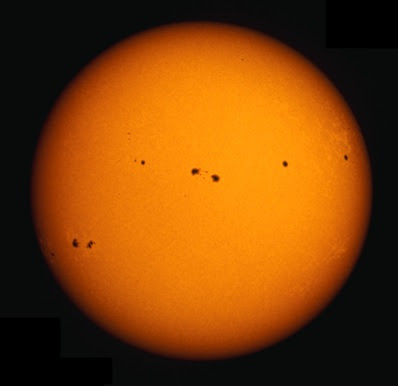Astronomy

- Noctilucent Clouds Are Back
Noctilucent cloud (NLC) season is here again following a splendid display on Tuesday evening. NLCs are thin sheets of cloud 82 kilometres high that reflect sunlight when the Sun is between six and sixteen degrees below the horizon. You can tell them...
- Solar Wind Tans Young Asteroids
Unlike human skin which is damaged by prolonged exposure to sunlight over a lifetime, an asteroid's surface is aged in the first instances of its life. Of course, the time scales of the exposure are much different: for an asteroid the damage is...
- Nasa Spacecraft Show 3-d Anatomy Of A Solar Storm
WASHINGTON -- Twin NASA spacecraft have provided scientists with their first view of the speed, trajectory, and three-dimensional shape of powerful explosions from the sun known as coronal mass ejections, or CMEs. This new capability will dramatically...
- Nasa's Spacecraft Has Captured A Solar Shockwave In Action For The First Time Ever
On Oct. 8, 2013, an explosion on the Sun's surface sent a supersonic blast wave of solar wind out into space. This shockwave tore past Mercury and Venus, blitzing by the Moon before streaming toward Earth. The shockwave struck a massive blow to the...
- Storms From Space: Sun Unleashes An X-class Flare
The sun fired off a massive solar flare late Friday.The huge solar flare registered as an X1.8-class event, one of the most powerful types of flares possible, and was captured on camera by NASA's powerful Solar Dynamics Observatory. The flare triggered...
Astronomy
The mystery of the missing sunspots explained

An unusually slow-moving solar jet stream buried deep inside the Sun is causing the lack of sunspots and low solar activity, say scientists from the National Solar Observatory (NSO).
The Sun usually follows a fairly regular pattern, cycling through an 11 year period of magnetic intensity ? during which, characteristic behaviour such as sunspots, flares and corona mass ejections are typical ? followed by 11 years of relative quiescence. At present, the Sun is in a phase of extreme quietness when it should have been displaying more signs of activity, a mystery that has been confounding scientists over the last year.
- Noctilucent Clouds Are Back
Noctilucent cloud (NLC) season is here again following a splendid display on Tuesday evening. NLCs are thin sheets of cloud 82 kilometres high that reflect sunlight when the Sun is between six and sixteen degrees below the horizon. You can tell them...
- Solar Wind Tans Young Asteroids
Unlike human skin which is damaged by prolonged exposure to sunlight over a lifetime, an asteroid's surface is aged in the first instances of its life. Of course, the time scales of the exposure are much different: for an asteroid the damage is...
- Nasa Spacecraft Show 3-d Anatomy Of A Solar Storm
WASHINGTON -- Twin NASA spacecraft have provided scientists with their first view of the speed, trajectory, and three-dimensional shape of powerful explosions from the sun known as coronal mass ejections, or CMEs. This new capability will dramatically...
- Nasa's Spacecraft Has Captured A Solar Shockwave In Action For The First Time Ever
On Oct. 8, 2013, an explosion on the Sun's surface sent a supersonic blast wave of solar wind out into space. This shockwave tore past Mercury and Venus, blitzing by the Moon before streaming toward Earth. The shockwave struck a massive blow to the...
- Storms From Space: Sun Unleashes An X-class Flare
The sun fired off a massive solar flare late Friday.The huge solar flare registered as an X1.8-class event, one of the most powerful types of flares possible, and was captured on camera by NASA's powerful Solar Dynamics Observatory. The flare triggered...
